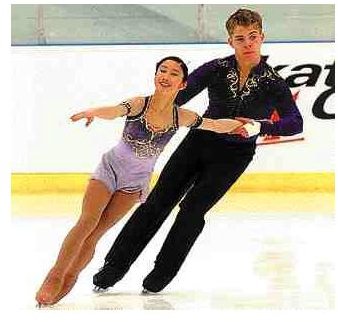Secrets to Photographing Figure Skaters: Tips, Tricks & Techniques to Photographing Figure Skaters
Photographing Figure Skaters
It seems that almost no matter where you live at some point or another you’ll have an opportunity for photographing figure skaters. A number of ice shows travel extensively worldwide giving residents of Europe, Asia and even South America a chance to be dazzled by their whirling acrobatics, breath-taking jumping displays and showers of icy sprays. Photographing figure skaters can provide some challenges for the digital photographer since there is almost continual motion and choreography on ice can be a bit unpredictable on many occasions. So here are some of the best kept secrets to photographing figure skaters whether they are on roller skates or ice skates.
The Secrets to Photographing Figure Skaters
Due to their nearly incessant movement, you will need to plan ahead for getting the best photo opportunities. One positive aspect of ice skating shows is that there is usually an ice rink which confines figure skaters to a defined area. This allows you to pick two or three specific spots or zones within the skating rink on which you can focus. A bit in advance, you can pre-set your focus, aperture and possibly your camera’s shutter speed freeing you up to concentrate more on composition and getting a greater number of well-composed, salable shots. Figure skaters will also tend to move in a circle or oval to take best advantage of the available skating area. So you can anticipate a great deal of movement in their routines. Some action highlights you can also plan on shooting can include:
* The peak of jumps when there is a momentary “pause” in movement
* At the height of lifts and carries in pairs figure skating
* Tandem figure skating during which two or more skaters mirror or parallel each other
* The finish of jumps and catches where again there is a moment’s pause in the skater’s motion
* Presentation bows and routine or performance finishes when figure skaters are not moving
* Other choreographed pauses, breaks and “stops” in figure skating routines and programs
Camera Settings for Photographing Figure Skaters
As for camera settings, these too can be anticipated to some degree when photographing figure skaters. Your camera settings can also be influenced by where and how close you are to the performers and the brilliance, or lack thereof, of the overall lighting conditions. Most figure skating exhibitions, performances and shows however, tend to be very well lit – a distinct advantage for the digital photographer. Here are a few starting camera setting recommendations.
For full action shots – You’ll likely want to try to “stop” or “freeze” the action at the height of jumps, so use a wide lens aperture f/8, f/5.6, f/4 or wider, with a fast shutter speed of 1/250, 1/500 or 1/1000 of a second.
For wide angle cast shots – With wider angle shots to include more of the figure skating cast and scenes, you might want to consider an aperture setting of f/8, f/11, or f/16 with a much slower shutter speed to compensate for the smaller aperture setting which will give you a much greater depth of field and wider coverage for scenes and figure skating cast shots. Since these types of scenes also have the cast stopped or still on the rink, movement is minimal so you should have fewer concerns over blurring caused by motion.
Tip: Both figure skating and hockey take place in an ice rink and involve moving subjects, so the photography techniques are similar. You may want to consider reading <em>How to Photograph Hockey</em> to further improve your skills of photographing figure skaters.
Telephoto and Close-Up shots – If you have a good zoom lens or are close enough to get good close-up shots from rink-side, use an automatic camera setting or a hand-held light meter to give you an idea of the range of settings you might need. Here is where some advance planning can pay off dividends resulting in a greater number of useable digital photographs. Focus on a spot the performers will pass, then wait for their next pass or two when you’ll have the camera setting and focus near perfect for getting the shot. During introductions, performance changes and show closings, you should have ample opportunities for snagging some great performer close-ups. Here again, a fairly wide aperture setting, f/5.6 at about 1/125 second should give you workable results as a starting point. Be sure to bracket your shots by one lens stop above and below your initial exposure. Alternatively, you can use a faster or slower shutter speed to compensate at a fixed lens aperture as well. Remember, you need not “freeze” action or motion completely to get a good image. You may want to allow some blur which will indicate that movement or motion.
Photographing Figure Skaters Using Altered ISO Settings
Another camera setting which can give you some additional latitude and exposure range when photographing figure skaters is the ISO setting. By changing this to 400 or 800, you can build-in some added sensitivity (double or quadruple) to your camera’s sensory array giving you more photographic options for capturing memorable, usable and salable digital images. Try combining some of these tips and techniques for photographing figure skaters and you’ll surely come up with greater numbers of outstanding digital images that can earn you more income, increase your photographic skills and boost your personal satisfaction and photographer’s portfolio. So next time the Ice Capades or the Circus on Ice from Russia comes to town, book a seat for a show – for two, and get out your camera.
